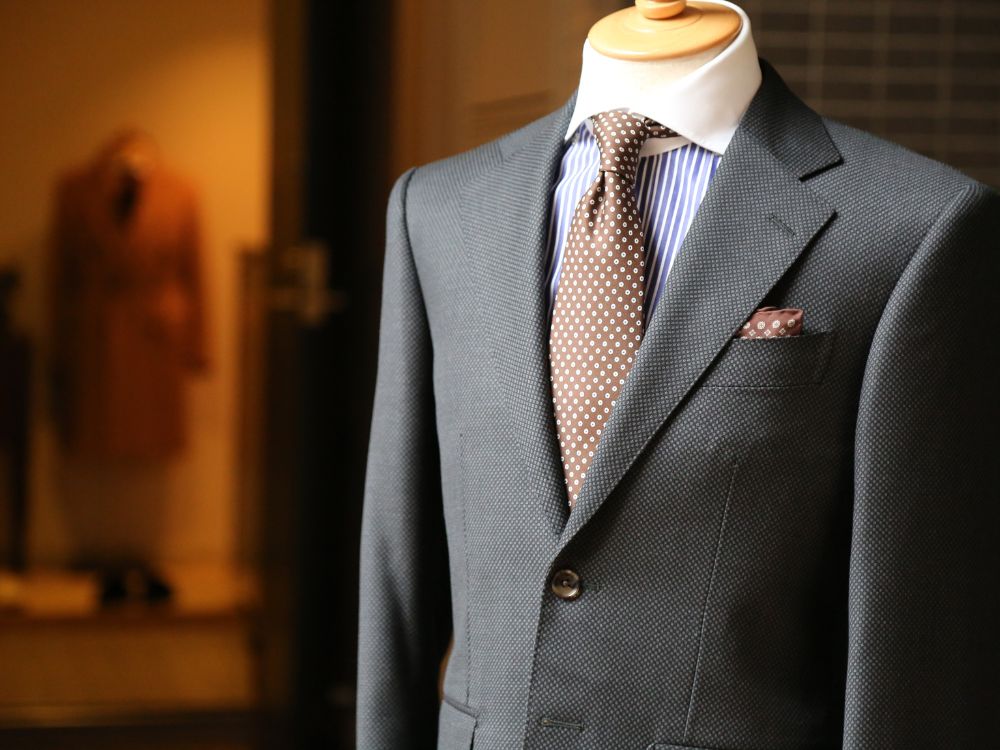How much does it cost to tailor a suit? Tailoring a suit is a common practice to achieve the perfect fit and enhance the overall appearance. Whether it’s adjusting the sleeves or taking in the waist, tailoring can transform a suit from ordinary to extraordinary. However, the cost of tailoring can vary depending on several factors, including the complexity of alterations, the reputation of the tailor, and the location. In this comprehensive guide, we will explore the cost of tailoring a suit and the factors that influence pricing. Let’s delve into the world of suit tailoring and uncover the secrets to achieving a perfectly tailored suit.

Factors Influencing the Cost of Suit Tailoring:
Several factors contribute to the overall cost of tailoring a suit. Consider the following elements:
- Complexity of alterations: The complexity of alterations required for your suit plays a significant role in determining the cost. Simple alterations, such as shortening sleeves or hemming pants, tend to be less expensive compared to more intricate alterations like taking in the waist or adjusting the shoulders.
- Fabric and construction: The type and quality of fabric used in the suit jacket, as well as the construction and design elements, can impact the cost of tailoring. Fine and delicate fabrics, such as silk or cashmere, may require more delicate handling, hence increasing the cost of alterations.
- Location: The geographic location of the tailor or alteration specialist also affects the cost. Tailors in metropolitan areas or upscale neighborhoods may charge higher prices due to higher overhead costs or a more demanding clientele.
Common Suit Alteration Costs:
While there is no standardized pricing for suit alterations, the following are some common alterations and their associated costs:
- Hemming pants: Shortening pant legs typically costs between $10 and $25. The price may increase if the pants have cuffs or require complicated alterations, such as tapering the leg.
- Sleeve adjustments: Shortening or lengthening sleeves can range from $20 to $50. If functioning sleeve buttons need to be moved or adjusted, the cost may be higher.
- Waist and seat adjustments: Taking in or letting out the waist or seat of the pants can range from $25 to $75, depending on the complexity of the alterations and the number of adjustments required.
- Jacket alterations: Alterations such as adjusting shoulder width, taking in or letting out the chest, or reducing the waist can range from $50 to $200, depending on the amount of work needed and the complexity of the jacket’s construction.

Customization and Additional Costs:
Tailoring services can also include customization and additional options that may impact the overall cost:
- Tapering: If you prefer a more tapered or slim-fit appearance throughout the suit, additional tapering may be required. This can incur an additional cost, typically ranging from $25 to $75, depending on the extent of the tapering.
- Jacket collar adjustments: If the jacket collar needs adjustments due to poor fit or posture, it may increase the cost of alterations. Expect to pay an additional $25 to $50 for collar adjustments.
- Lining adjustments: If alterations to the jacket require adjustments to the lining, such as resizing or repairing, additional costs may be incurred.
- Button and zipper repairs or replacements: If buttons or zippers need repair or replacement, the tailor may charge an additional fee for the materials and labor.
Notes on tailor a suit
Tailoring a suit is a crucial step in achieving a perfect fit and enhancing your overall appearance. Whether it’s for a special occasion or professional wear, proper tailoring can transform a suit for a flight from average to exceptional. However, it’s important to consider certain factors to ensure a successful tailoring experience.

Finding the Right Tailor:
Choosing the right tailor is crucial for obtaining the best results. Consider the following factors when selecting a tailor:
- Reputation and expertise: Look for a tailor with a solid reputation and a proven track record in suit tailoring. Check reviews, ask for recommendations, and inquire about their experience, especially in men’s tailoring.
- Specialization: Consider tailors who specialize in men’s suits or have experience working with similar fabrics and styles. Tailors specializing in suits will have a better understanding of suit construction and can provide more accurate alterations.
- Portfolio and sample work: Request to see examples of the tailor’s previous work, especially on suits similar to the one you intend to have tailored. This will give you an idea of their craftsmanship and attention to detail.
- Communication and rapport: Choose a tailor with whom you feel comfortable communicating your preferences and who is willing to listen to your needs. A good tailor will take the time to understand your style and fit preferences.
Proper Communication:
Effective communication is vital to ensure that the tailor understands your expectations. Consider the following points when discussing your suit alterations:
- Fit preferences: Clearly communicate your desired fit, whether it’s a slim fit, regular fit, or a specific style that you prefer. Provide examples or use visual aids if necessary to convey your preferences accurately.
- Specific alterations: Discuss the specific areas where you need alterations, such as sleeve length, jacket waist suppression, or trouser hem length. Be clear in explaining your preferences and any challenges you face with the original fit.
- Budget and timeline: Communicate your budgetary constraints and inquire about the estimated cost of the alterations. Also, discuss the desired timeline, especially if you have an upcoming event or deadline.

Assessing Fit:
- Initial fit evaluation: Before any alterations are made, have the tailor assess the fit of the suit on you. This evaluation allows the tailor to identify areas that need adjusting and discuss the recommended alterations with you.
- Balance and symmetry: Check the suit’s balance and symmetry on your body. Ensure that the shoulder seams are aligned with your natural shoulder line, jacket buttons are positioned correctly, and trouser cuffs fall evenly.
- Range of motion: Assess the comfort and range of motion when moving in the short suits. Make sure there is enough room in the arms, shoulders, and chest to allow for ease of movement without feeling restricted.
- Body posture: Discuss any postural quirks or specific body concerns you have, such as rounded shoulders or a prominent chest. Tailors can make adjustments to accommodate your unique body structure and help you achieve a more flattering fit.
Conclusion:
The cost of tailoring a suit can vary based on factors including the complexity of alterations, fabric and construction, location, and the reputation of the tailor. Hemming pants, sleeve adjustments, waist and seat alterations, and jacket modifications are some common alterations and their associated costs. Customization options, additional repairs or replacements, and rush service can also add to the final bill. It is essential to communicate your expectations and budget with the tailor to ensure a clear understanding of the estimated cost.

